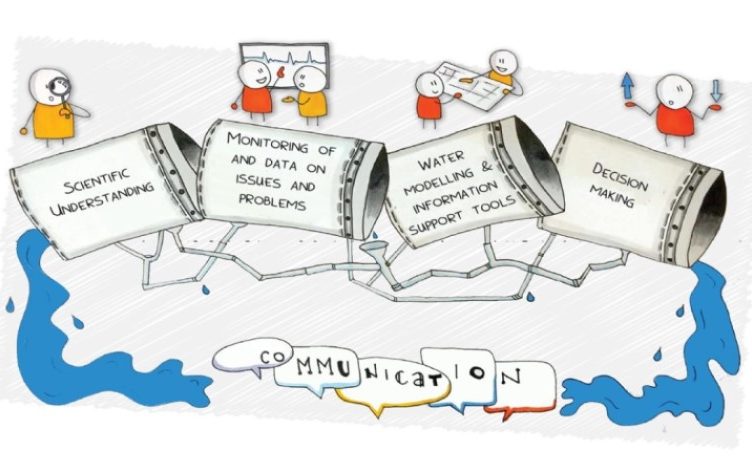
05/12/2024
Event Summary: Overview of water quality modelling projects from the Queensland Water Modelling Network with Callym Dunleavy
Read more
Who would have thought, “our biggest day out yet!” would literally be the biggest day the Queensland Water Modelling Network have had to date? Saturday, 11 February 2023 was a super-massive day on the Sunshine Coast to take in the beauty of the region and witness the true value of innovation and scientific collaboration that has resulted in the Blue Heart project and Stockland's Aura development.
The day began early with introductions on the bus, including a special welcome to international delegates of the International Water Centre’s Water and WASH Futures Conference from the Solomon Islands, Vanuatu and Indonesia, as well as representatives from local government including Bundaberg Regional Council and Noosa Shire Council, a number of consulting companies, universities, NRM groups, community groups and utilities.
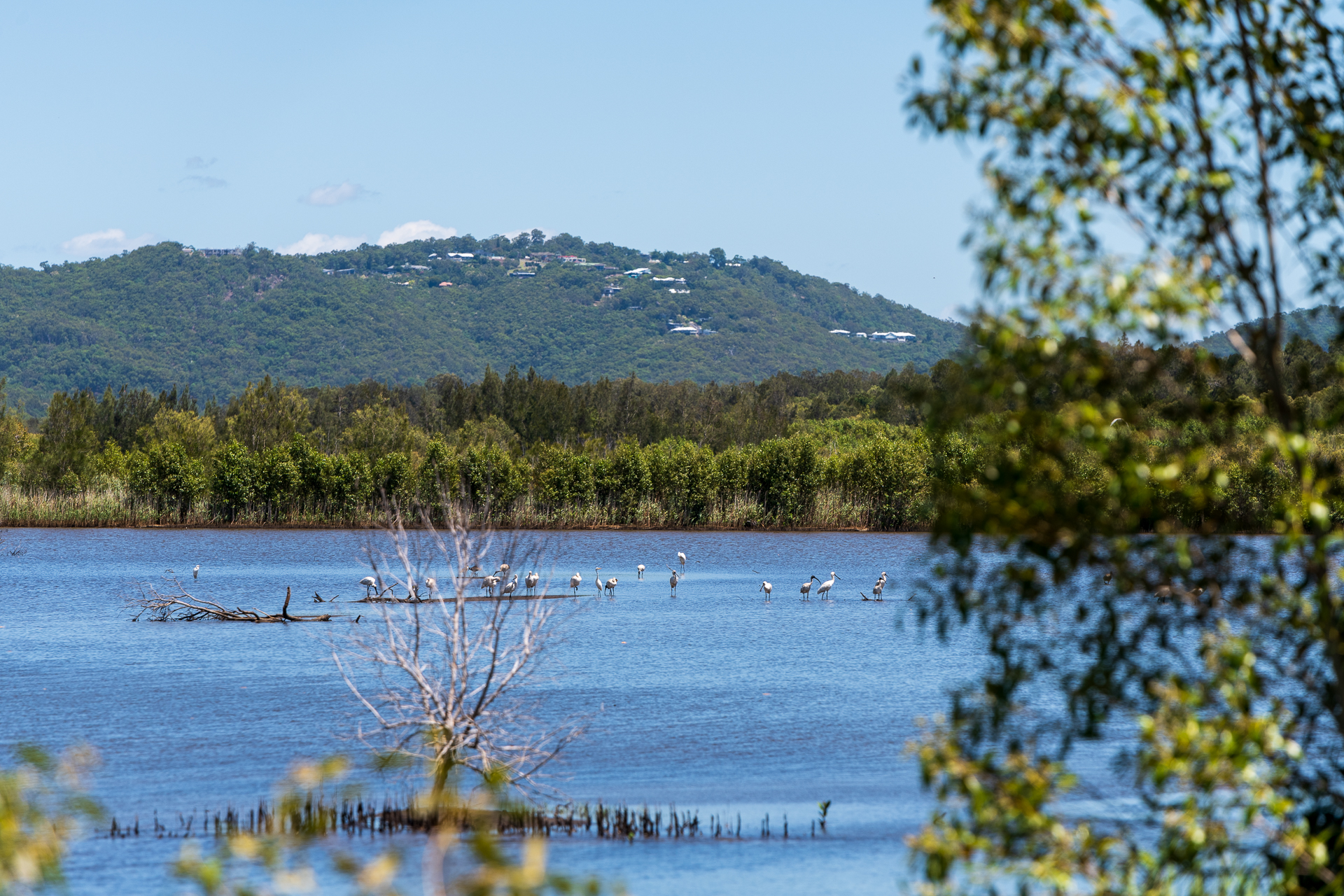
Our first stop was the Blue Heart Project site, a recovering floodplain area of more than 5,000 hectares in the Maroochy River catchment. The area comprises 1400 hectares of public land as part of the Sunshine Coast Council’s Coolum Creek Environment Reserve network, the Queensland Government’s Coolum Creek Conservation Park, and Unitywater’s Yandina Creek Wetland. Designed as a pilot to trial blue carbon offsetting for the region, improve flood resilience and return a significant area from cane cropping lands to wetlands, this project is being delivered in partnership between by Sunshine Coast Regional Council, Unity Water and the Department of Environment and Science with support from the Commonwealth government.
PhD researchers Ashley Rummell (University of Sunshine Coast) and Charles Cadier (Griffith University) introduced early arrivals to the site, before the bus arrived. One we were all collected, Environmental and Cultural Heritage Planning Specialist Emma Newton, from Unity Water began by acknowledging the Kabi Kabi people and their land, before introducing us to the site and partners from Sunshine Coast Council Dr. Sonia Marshall and Graham Webb who collectively discussed the process of partnering with each other and with local landholders and Traditional Owners to bring all stakeholders along for the journey.
The group of 50 split up into 5 smaller groups, led by our hosts, to walk the trail and see this area in it’s transition phase. In returning this area to a wetland, the project team have witnessed the natural regeneration of the site with the opening of formally closed flood gates. Endemic and RAMSAR bird species along with other flora and fauna have recolonised the site over the few short years since the project began.
As a blue carbon site, carbon offsetting is a key consideration for the Blue Heart with 170 hectares equates to approximately $40,000 annually.
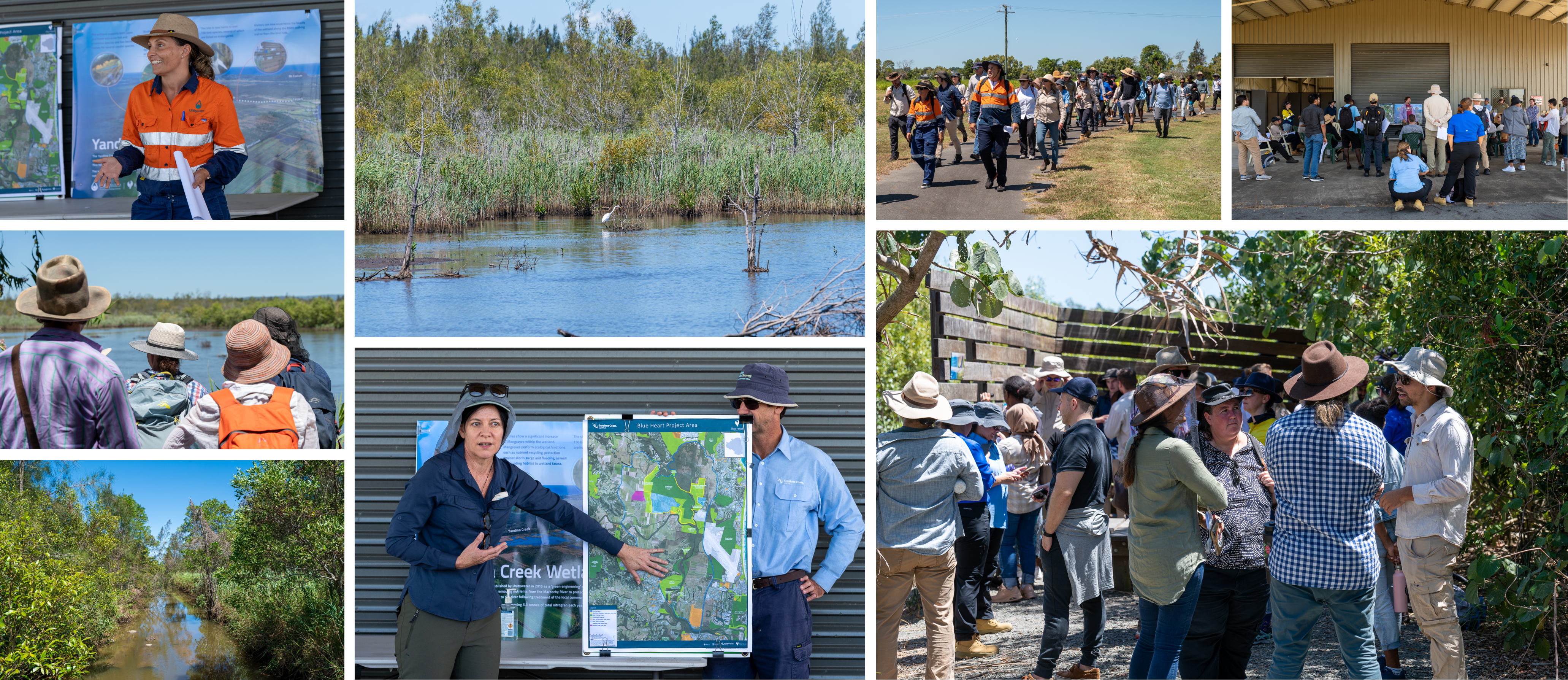
We stopped at Coolum Beach to enjoy the cool ocean breeze and a delicious lunch supplied by The German Bakehouse at Coolum. It was a great opportunity to get to know each other a little better, take a dip for those prepared to brave the swell, and generally enjoy some time together.
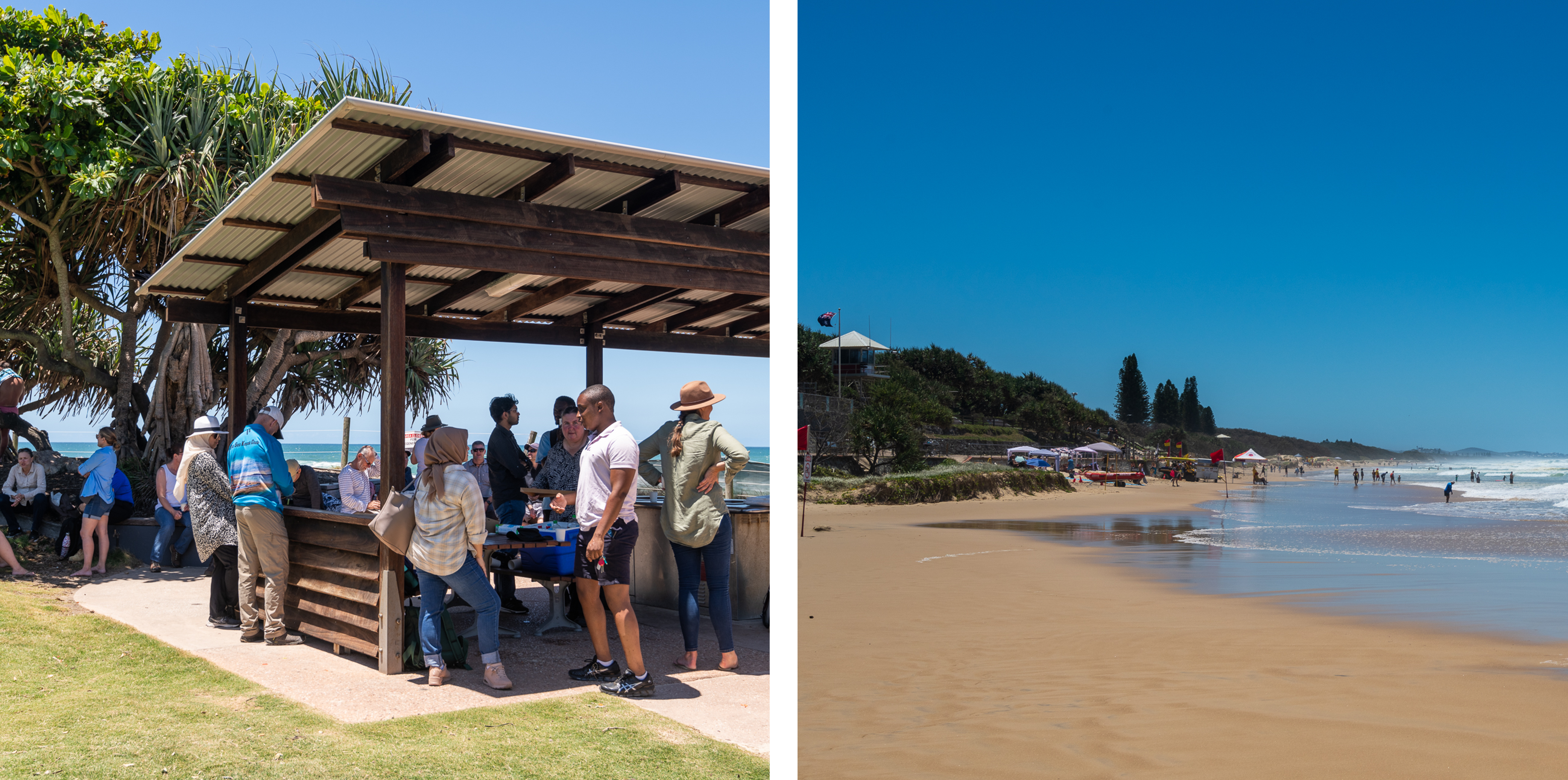
Our second focus stop for the day was the Aura development, west of Caloundra. This site has a previous history as a State Forestry pine plantation and is now home to more than 10,000 residents, businesses, schools and community centres and continues to grow. Our hosts, Tony McAlister, Director at Water Technology and Mark Stephens, Senior Environment and Community Development Manager from Stocklands talked us through the long approvals process and some of the challenges faced during the development of this site including the heavily scrutinised environmental assessment given it’s proximity to the high ecological value areas of Bells Creek, Pumicestone Passage and the Moreton Bay RAMSAR site. You can find out more about Tony’s process with this project by reviewing this QWMN article.
Unlike any other development in Southeast Queensland, Aura has gone above and beyond in their approach to water quality management claiming to be “gold-plated” and promoting their sustainable edge and environmentally sensitive approach as part of their sales pitch. High efficiency Water Sensitive Urban Design (WSUD), played and continue to play a major role in keeping waterways clean. To date, water quality running off the site has improved following the installation of large wetland-like bioretention basins.
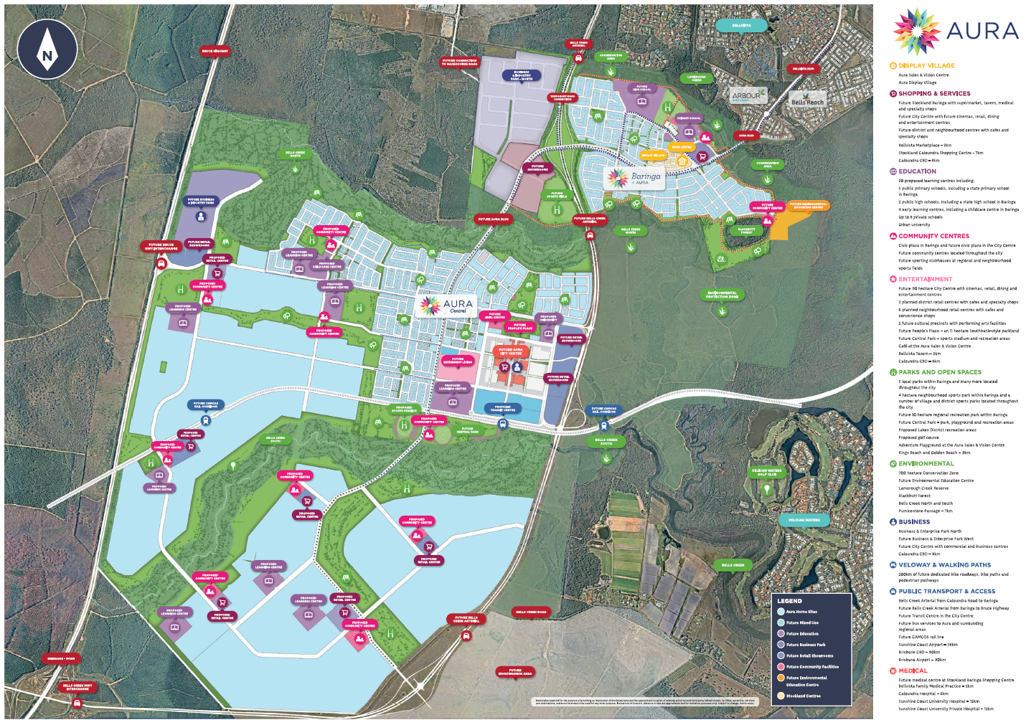
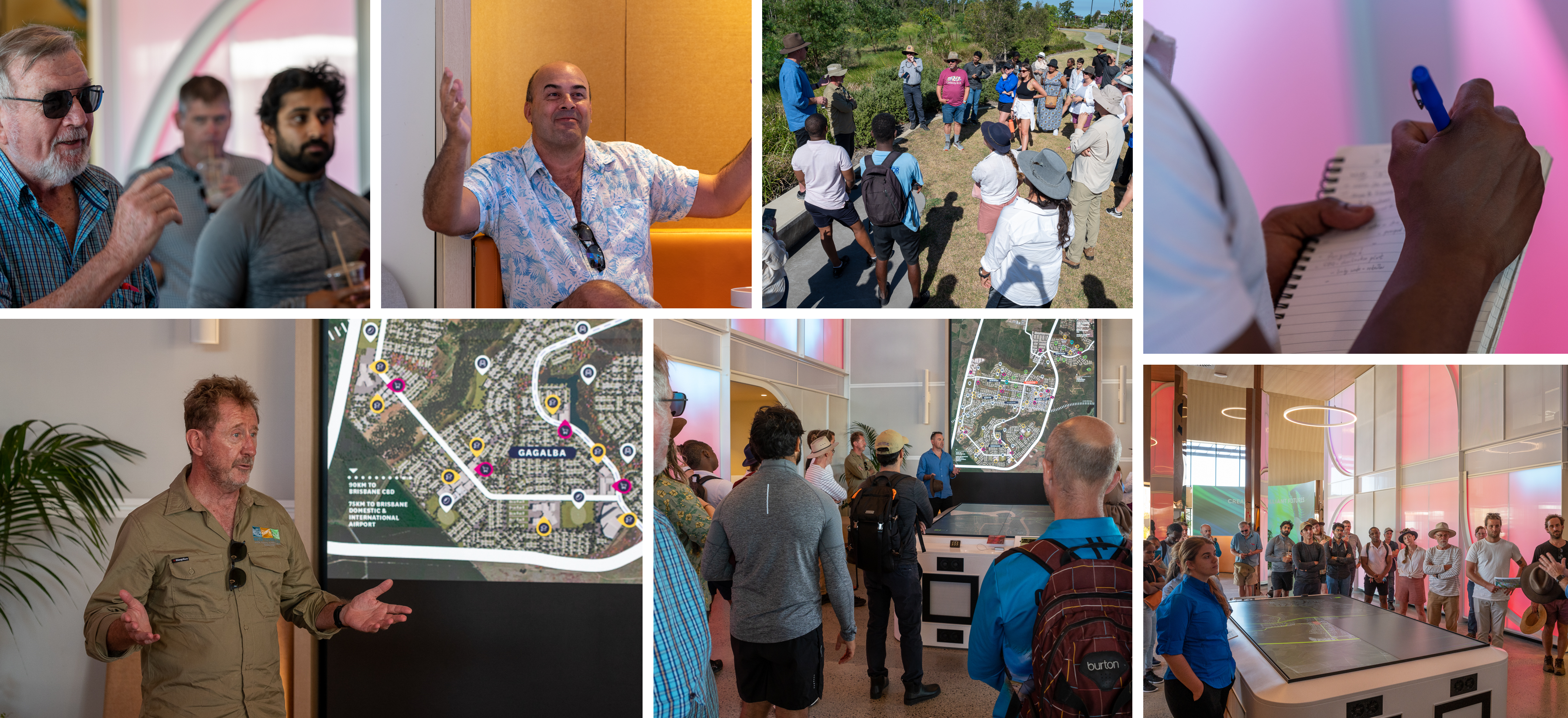
We would like to thank all partners and participants involved in making this day our biggest day out with new connections made and plenty of experiential learning had.
We look forward to the next one!
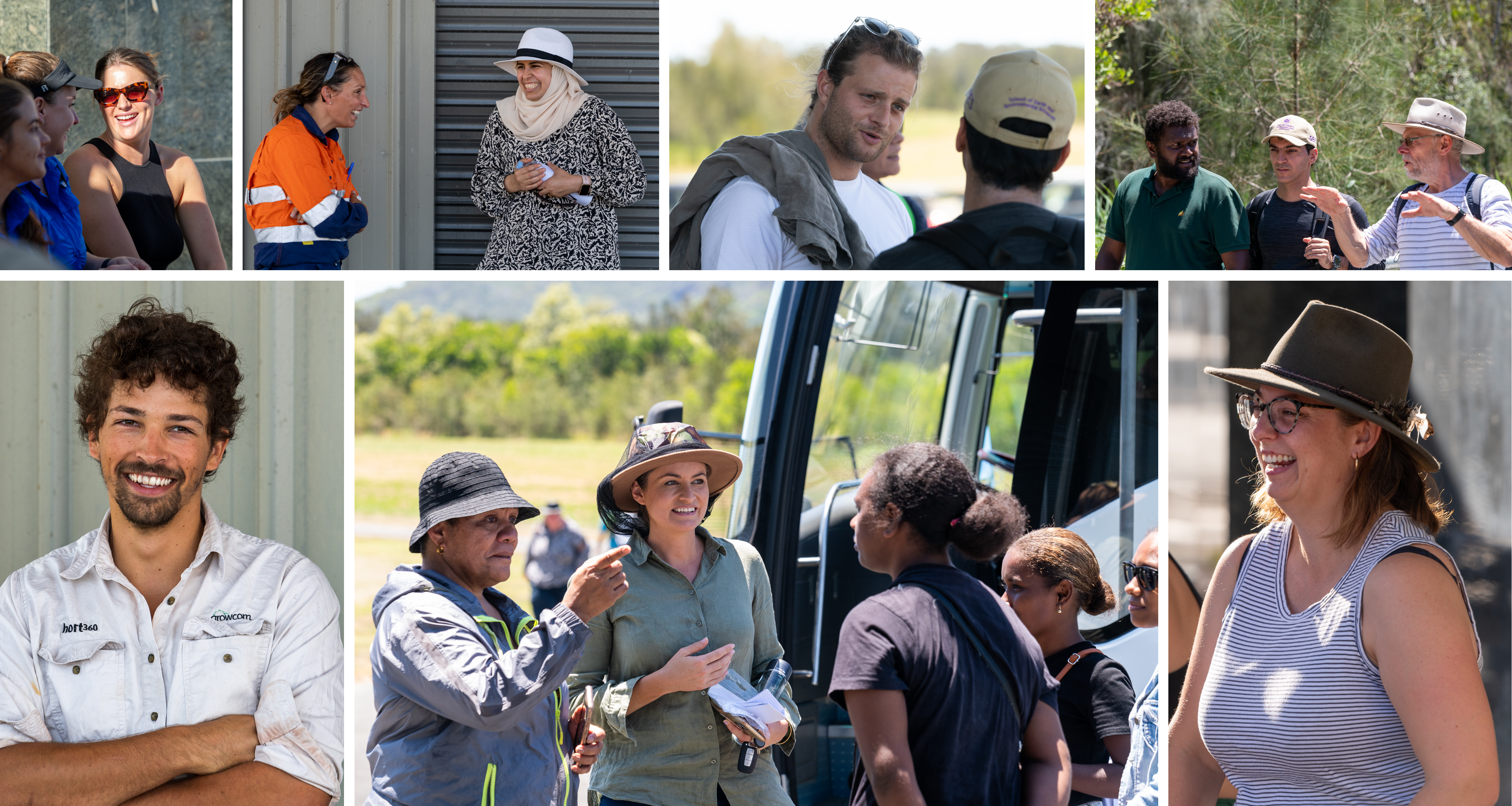
All photographs by AJW Media